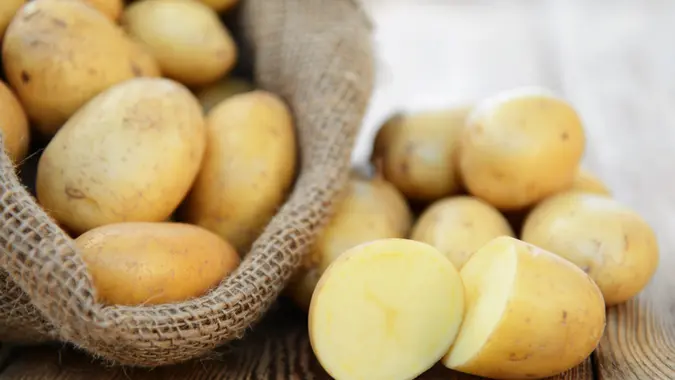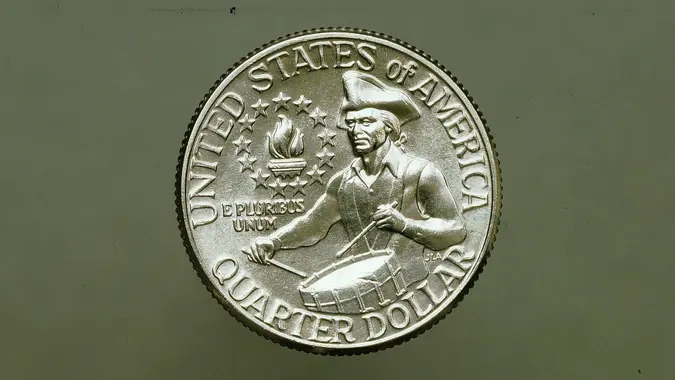There Is a Potato Shortage in the US: What It Means for Your Grocery Bill

Commitment to Our Readers
GOBankingRates' editorial team is committed to bringing you unbiased reviews and information. We use data-driven methodologies to evaluate financial products and services - our reviews and ratings are not influenced by advertisers. You can read more about our editorial guidelines and our products and services review methodology.

20 Years
Helping You Live Richer

Reviewed
by Experts

Trusted by
Millions of Readers
They may be called French fries, but they are a tried-and-true American staple right along with hamburgers, hot dogs and pizza — also foods we adopted from other countries. If not converted to fries, then there are the basic mashed potatoes, another enticing side dish.
Unfortunately, there are reports of a potential potato shortage due to weather complications for the harvest. Let’s take a look at what that could mean for grocery prices in America.
Bad Weather Left Crops Damaged
Major potato producers in North America have suffered crop damage due to persistent cold, wet weather. As a result, supplies are being competitively purchased. In October, the cold conditions started affecting Alberta and Idaho farmers, who tried to save as many crops as possible as frost surrounded their potatoes. Worse, snow and rain in North Dakota, Minnesota and Manitoba caused supply loss. Damaged crops result in smaller potatoes.
According to Travis Blacker, the industry-relations director for the Idaho Potato Commission, the demand for French fries continues to be high. When supply cannot meet demand, the prices rise — which is, of course, a negative for consumers. Furthermore, Stephen Nicholson, the senior grains and oilseeds analyst at Rabobank, said that because U.S. exportation of potatoes will drop, the international costs of French fries will also increase.
Just how much damage has been done? The United Potato Growers of Canada estimates 18% of Manitoba’s total planted area was unharvested. Moreover, frost damage affected around 6.5% of Alberta’s potatoes. The Department of Agriculture predicts that output this year will drop 6.1%, the lowest since 2010. Idaho, specifically — the top potato producer in the U.S. — will drop 5.5%.
Still, Kevin MacIsaac, the general manager for the United Potato Growers of Canada, ultimately believes that the situation is “manageable,” and that some potatoes will just have to shift to different processing plants. The Canadian East Coast sees better harvests, so Cavendish Farms “isn’t expecting any customer shortages at this time,” said spokeswoman, Mary Keith.
Potato Alternatives To Consider
In the meantime, here are some suggestions for potato replacements for your recipes, should you be affected by the shortage:
- Carrots: While they appear vastly different, they can easily be made into chips, or even mashed.
- Cauliflower: If not interested in mashed cauliflower, consider cauliflower rice.
- Daikon: When cooked, they adopt potato-like qualities.
- Turnips: These benefit from a similar texture to potatoes.
- Celery root: Capable of being fried for French fries.
These vegetables can also be steamed, scalloped, roasted, boiled or baked and used in soups, stews or other dishes.
 Written by
Written by  Edited by
Edited by 

























